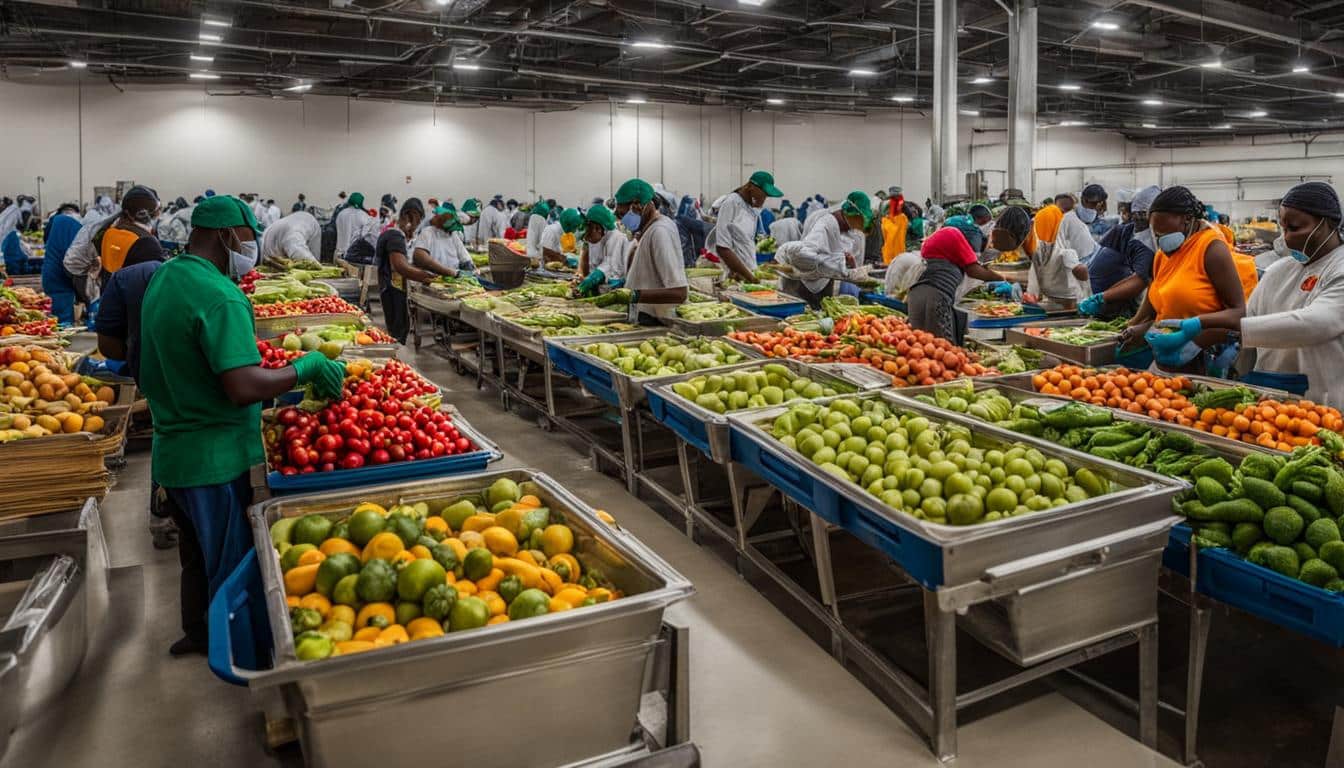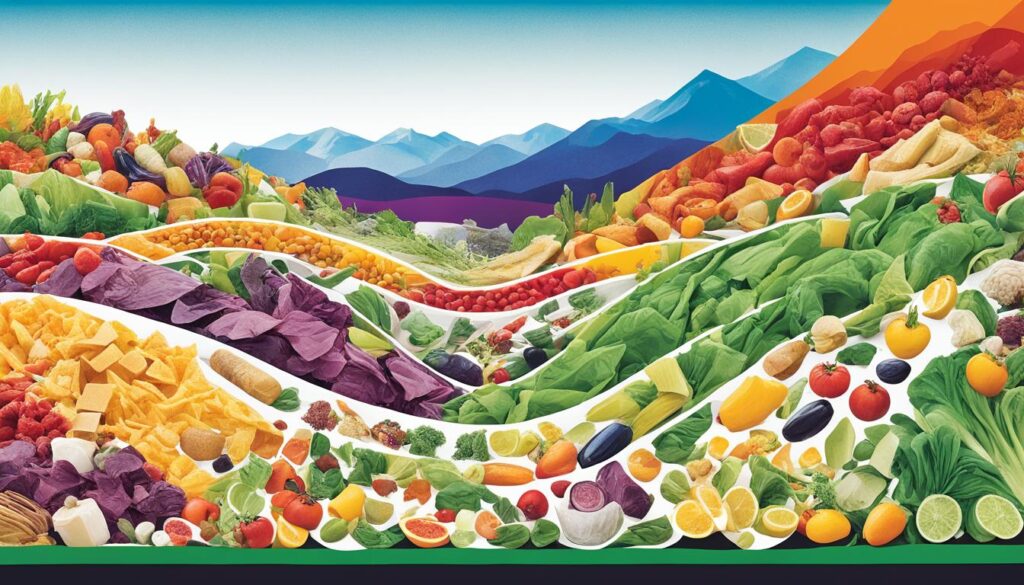
Imagine this: it’s the end of the week, and you’re cleaning out your refrigerator. As you rummage through the shelves, you come across a bag of wilted lettuce and some overripe tomatoes. You sigh, realizing that once again, this food will go to waste. But what if there was a way to turn this seemingly useless food into something valuable?
Introducing edible food recovery, a revolutionary approach to waste reduction and sustainability. Every year, millions of tons of food are discarded, contributing to greenhouse gas emissions and straining our resources. But edible food recovery aims to change that by transforming waste into resources that can be used to nourish our environment and communities.
Composting as a Food Waste Recycling Method
Composting is a simple and effective method to recycle food scraps and produce nutrient-rich fertilizer. In household composting, food waste is broken down by fungi and bacteria in an environment rich in oxygen. This process releases compost and carbon dioxide (CO2), which is considered carbon-neutral as plants capture CO2 from the atmosphere during their lifetime. Ready-made compost can be purchased for household or agricultural use.
Additionally, companies can invest in commercial food recycling machines to reduce food waste in manufacturing and hospitality sectors.
Household Composting: A Sustainable Solution
Household composting offers individuals the opportunity to contribute to waste reduction and sustainability from the comforts of their own homes. By diverting food scraps from landfills and enabling the natural decomposition process, household composting not only produces nutrient-rich fertilizer but also significantly reduces the amount of waste ending up in landfills.
Large-Scale Biodigestion Facilities for Efficient Food Waste Processing
Large-scale biodigestion facilities, such as the Yarra Valley Water facility in Melbourne, take food waste recycling to the next level. These facilities utilize anaerobic digestion to process food waste and organic matter. In addition to food waste, these biodigestion facilities can also process municipal and some industrial waste, making them versatile solutions for waste management. The anaerobic digestion process produces both biogas and digestate. The biogas can be used to generate energy, while the nutrient-rich digestate can be used as fertilizer for agriculture, completing the recycling loop.
By implementing composting practices at the household level and investing in large-scale biodigestion facilities, we can effectively minimize food waste, reduce greenhouse gas emissions, and create valuable resources from what was once considered waste.
Energy Recovery from Food Waste
Food waste can be converted into sustainable energy through waste-to-energy processes. These processes involve using organic waste to generate electricity or heat. In Australia, about 130 landfill sites capture methane from rotting food waste to produce electricity in gas-fired power plants. Another method of methane capture is through anaerobic biodigestion, which transforms commercial food waste into energy. The ReWaste plant in Melbourne, operated by Yarra Valley Water, processes 33,000 tonnes of food waste annually, enough to power approximately 2,000 homes. According to the Department of the Environment and Energy, in 2014-15, 22% of Australian food waste was recycled, mostly through composting, and 16% was used for energy recovery, mainly through landfill methane capture. Investing in more biodigestion facilities could further reduce food waste and enhance energy security.
Waste-to-Energy Process Comparison
| Waste-to-Energy Process | Key Features | Advantages | Disadvantages |
|---|---|---|---|
| Landfill Methane Capture | – Captures methane from decomposing food waste in landfills – Produces electricity in gas-fired power plants |
– Reduces greenhouse gas emissions – Turns waste into a renewable energy source |
– Limited by the availability of suitable landfill sites – Requires ongoing monitoring and maintenance |
| Anaerobic Biodigestion | – Converts commercial food waste into energy through anaerobic digestion – Can process various organic waste, including municipal and industrial waste |
– Minimizes methane emissions – Generates renewable energy – Offers potential for additional waste streams |
– Requires specialized facilities and equipment – Needs efficient waste collection and sorting systems – Investment and operational costs |
Conclusion
The transformation of food waste into valuable resources is essential for waste reduction and sustainability. By implementing strategies like composting and biodigestion, we can recycle food waste and turn it into nutrient-rich fertilizer while also generating renewable energy.
But the potential for waste transformation doesn’t stop there. Innovative research allows us to reprocess food waste into functional materials and bioplastics, creating opportunities for resource recovery. For instance, by-products from fruits and vegetables, such as fibres from root vegetables and seeds from fruits like mangoes, can be reprocessed into materials used in construction, packaging, and even pharmaceuticals.
In addition to this, extracts and oils derived from food waste can find applications in dietary supplements, pharmaceuticals, high-value cosmetics, and biofuels. The possibilities are vast, and ongoing research and development in the field of food waste transformation continue to uncover new sustainable solutions.
While transforming food waste is crucial, it’s important to place equal emphasis on preventing food waste in the first place. A circular economy approach that includes narrowing resource loops, slowing resource loops, and closing resource loops can help us achieve sustainable and resilient food systems. Enhancing physical and human infrastructure, as well as leveraging computational and data infrastructures, will pave the way for a future where food recovery plays a significant role in minimizing waste and maximizing resource utilization.
FAQ
What is edible food recovery?
What is composting?
How can composting be done at home?
What are large-scale biodigestion facilities?
How is energy recovered from food waste?
What is the importance of waste transformation?
Source Links
- https://www.science.org.au/curious/earth-environment/transforming-food-waste-making-something-out-rubbish
- https://wastedfood.american.edu/wp-content/uploads/2022/03/Babbitt_et_al_2022_Current-_Opinion-_in-_Environmental-_Sustainability_Transforming_wasted_food_will_require_systemic_and_sustainable_infrastructure_innovations.pdf
- https://recyclemore.com/business/edible-food-recovery/


